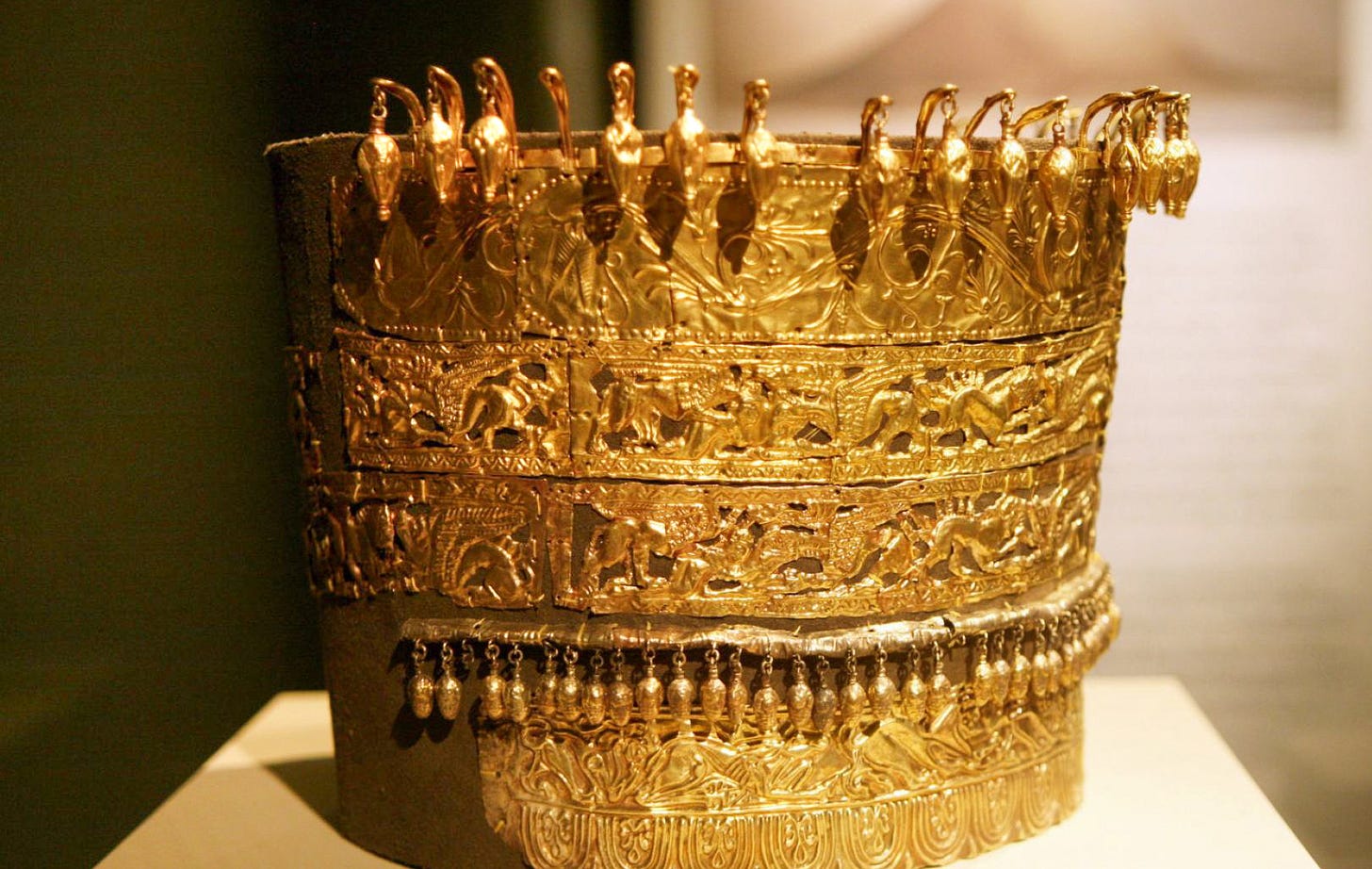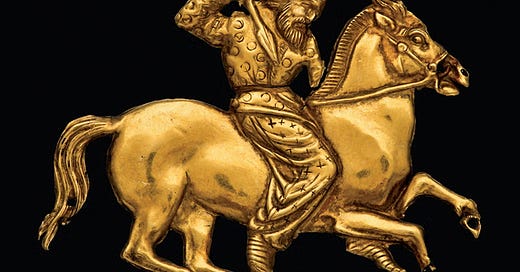The hidden truth about Scythians – warriors of the Ukrainian steppes
Learn about the ancient civilization that ruled the Black Sea and beyond. Women warriors, epic battles, and treasures that rivaled Egyptian pharaohs.
Imagine golden Ukrainian steppes that spread far to the horizon without an end in sight. The wind is rustling through vast grassland, whispering the tales of the past. The sun is shining high in the sky. The songs of the birds and crickets fill the warm air that smells of flowers and dry grass. Thousands of years ago, it was home to the ancient Scythian people – the brave and wise warriors who ruled this land and were feared and admired by everyone they met.
“No one who attacks them can escape, and no one can catch them if they desire not to be found.”
— Herodotus, the Ancient Greek historian about the Scythians, 5th century BCE
The Scythians were nomadic tribes of Iranian origin who, after moving through Central Asia, came to the lands of southern and central Ukraine around the 8th century before our era. They were skilled warriors, herders, craftsmen, and possessed immense gold treasures. The Scythians ruled over a huge territory and built a powerful civilization that flourished and dominated the region for more than 500 years.
When you think about the ancient tombs with piles of gold and treasures, you may think of Egypt, but never of Ukraine. Yet, the Ukrainian land stored an unthinkable amount of Scythian gold and artifacts, and many of them have not been found to this day. Both of the Scythian capitals, as well as the majority of Scythian burials, known as kurhans, were located in Ukraine. For centuries, locals passed down legends from one generation to another about the gold hidden in the ground and the ghosts of the warriors who galloped the steppes at night.

Despite the archaeological and historical evidence that Ukraine was the center of the Scythian civilization, Russians have been appropriating the Scythian legacy and claiming it as their own for centuries. They have been doing it very successfully, and not only spread lies and twisted history, but also steal Scythian artifacts from Ukraine and present them as Russian.
The more I learned about the Scythians, the more I was captivated by their history and culture, and infuriated by Russian narratives that dominated every English source I encountered. To find the truth, I studied the works of the Greek historian Herodotus, who visited the Scythians during his life and is considered one of the main sources of information about them. I also researched and translated dozens of articles and books by Ukrainian archaeologists and scholars who devoted all their lives to studying the Scythians and who examined the Scythian burial sites themselves. I got so immersed in this subject that I started dreaming about Scythia and its people at night. It is, by far, the most researched article I’ve ever written.
Read below to find out how the Scythians lived and ruled, discover their traditions and culture, and see unique photos of the gold treasures that tell the story of their lives. I’ll share the Scythian legends and stories of epic battles, the beauty methods used by Scythian women, and the shocking burial rituals. I invite you to go on a journey 2,800 years back to the ancient Ukrainian lands and discover the Scythian civilization that still keeps historians up at night with its mysteries and undiscovered treasures.




